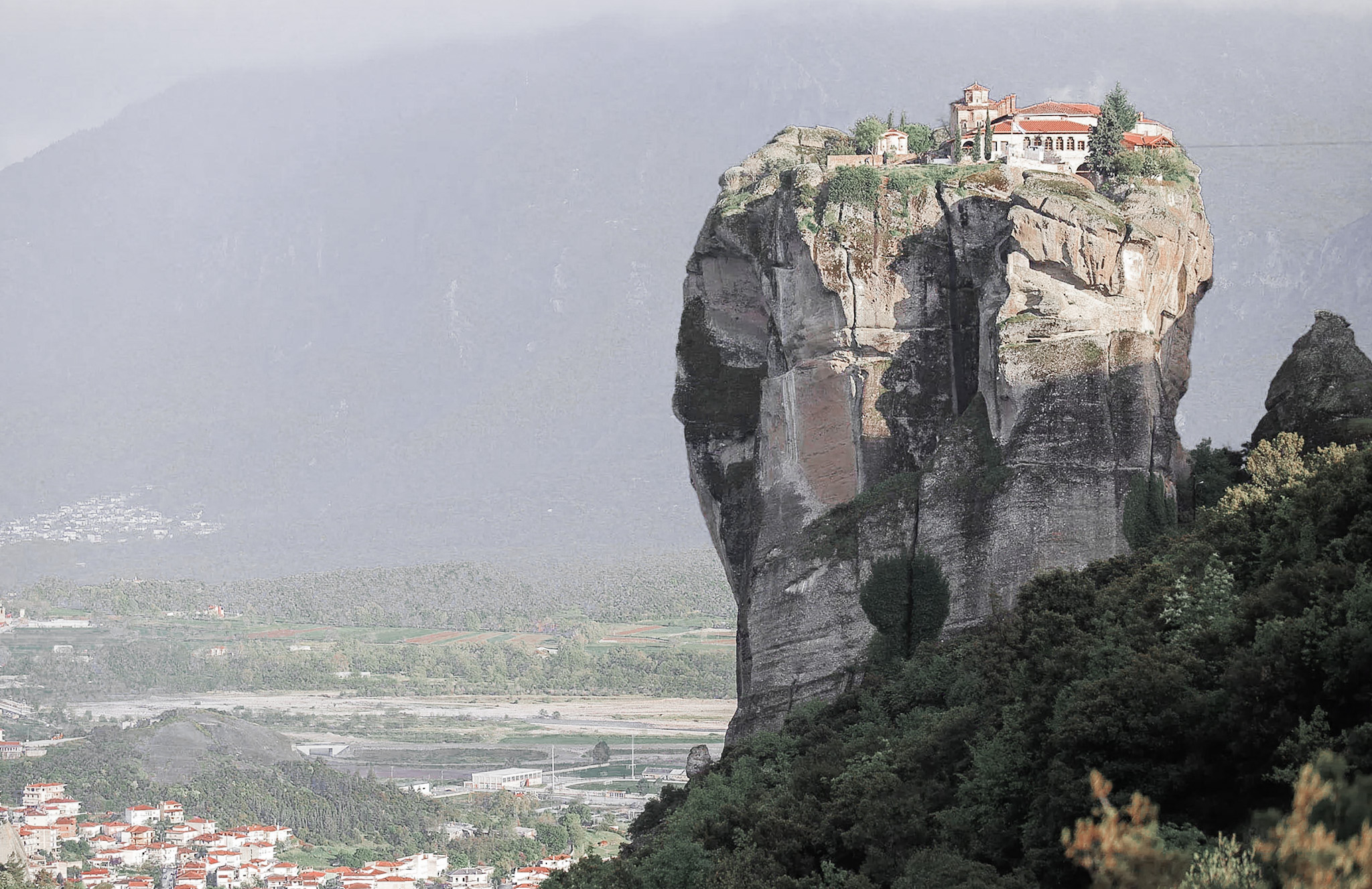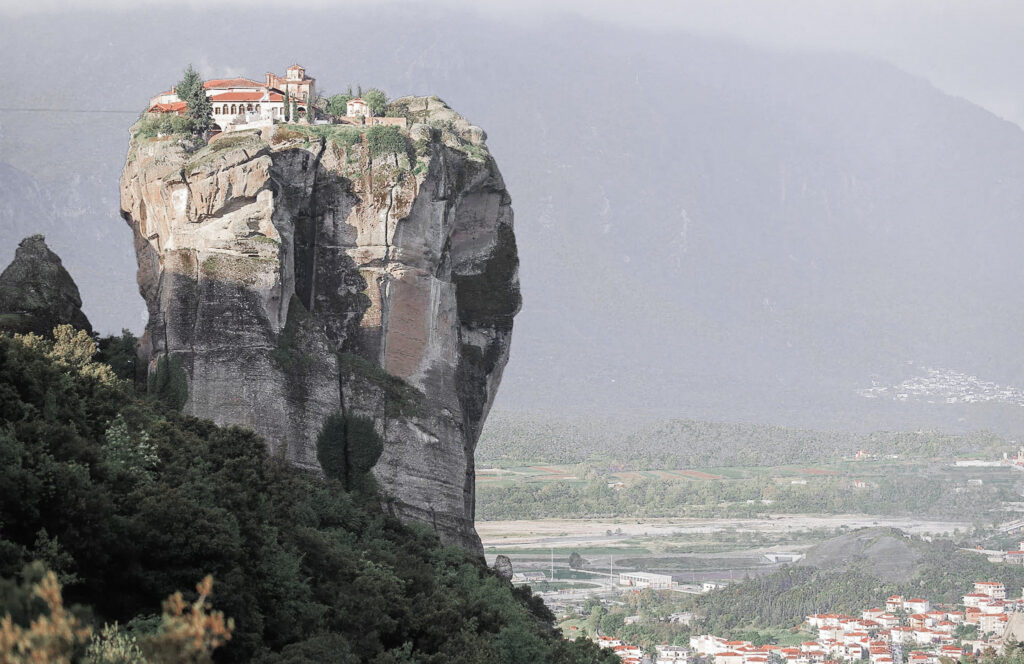
Today marks Easter in the Greek Orthodox church, which falls later because the liturgical calendar is based on the Julian calendar rather than the Gregorian one we use.
Customs differ too. Their Lent is much stricter. Rather than giving up one item and meat on Fridays, Greeks forsake all animal products, including meat, dairy, and eggs. The services during Holy Week are longer and more elaborate. Easter Sunday begins at midnight and is marked by an exceptional service called Anastasi, meaning ” resurrection.” And there are lots of fireworks and feasting.
They do have Easter eggs, but rather than dyed bright colors, Greeks die their eggs red to symbolize the blood of Christ. Also, instead of hot cross buns, they enjoy a sweet bread flavored with orange and mastiha, called tsoureki.
It’s all a marvelous wonder.
Even more marvelous are the renowned Meteora Monasteries. This collection of six Eastern Orthodox monasteries sits on top of central Greece’s towering rock formations. The word “Meteora” means “suspended in the air” or ” in the heavens above,” which aptly describes the dramatic and awe-inspiring setting of these monasteries.
One of the most popular traditions associated with the Meteora monasteries is the Holy Week celebrations. During this week, visitors and pilgrims fill the sanctuaries who come to witness the religious rituals and processions that take place.
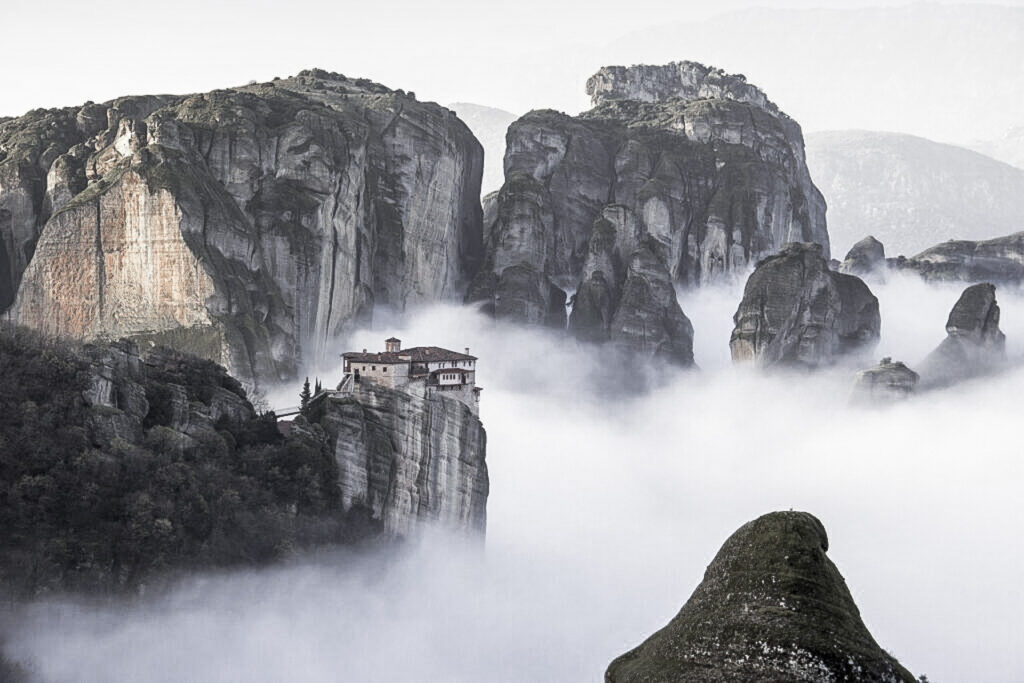
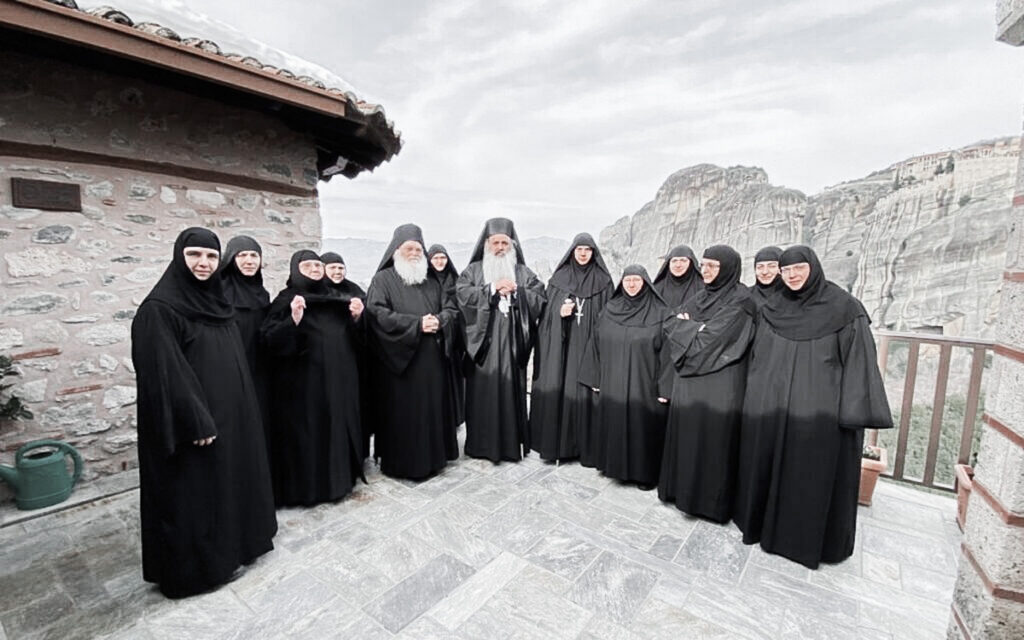
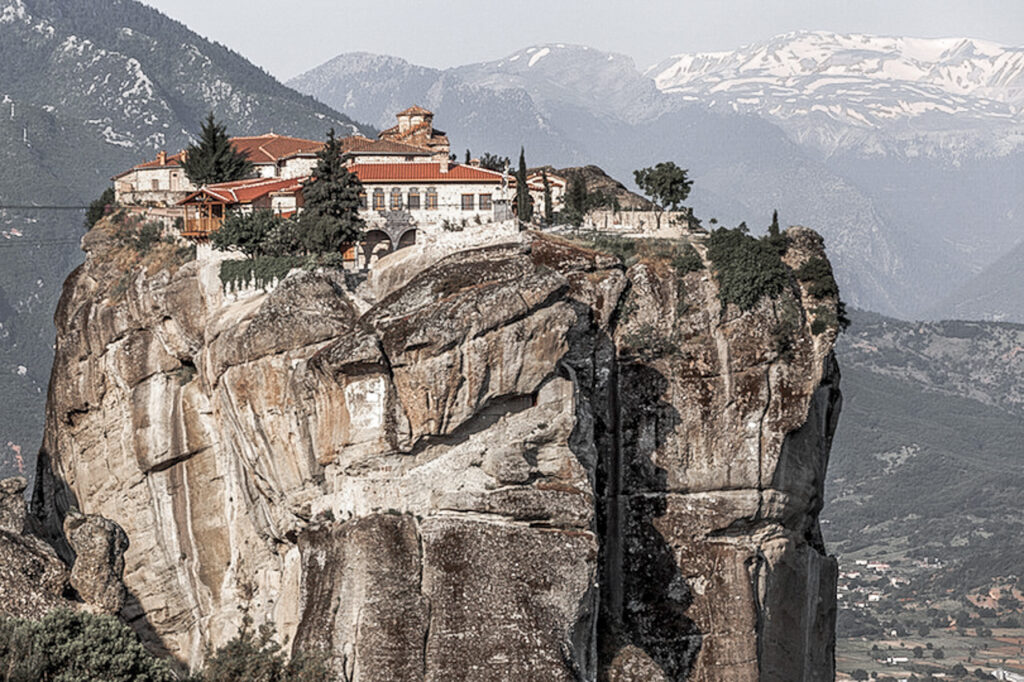
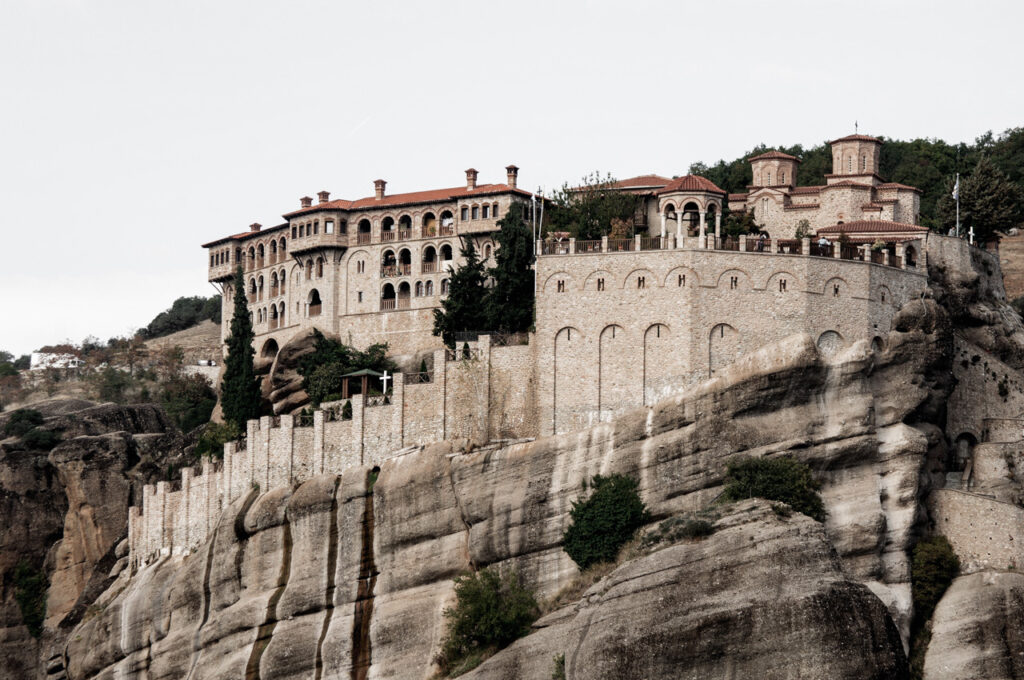
But the myths and legends intrigue most. One of the most popular is the legend of the monk who flew to the top of the rock formations using a rope ladder. According to the story, the monk could fly to the top with the help of angels, who helped him construct the ladder.
Another popular myth is the legend of Saint George and the Dragon. A terrible dragon was terrorizing the people of the nearby village of Kastraki. The villagers prayed to Saint George for help, and he appeared on his white horse. Saint George rode to the top of the rock formation where the dragon lived, defeating the dragon and saving the village from further harm.
In commemoration of this legend, they built a chapel dedicated to Saint George on one of the highest rocks at Meteora. Visitors can see a fresco depicting Saint George slaying the dragon. The feast day dedicated to Saint George on April 23rd is still widely celebrated because of this folklore.
The history of the Meteora Monasteries is traced back to the 11th century when hermits began to settle in the area to seek solitude and a place to live in contemplation. These early hermits lived in caves and crevices in the natural rock formations in the area. And over time, they began constructing small chapels and monastic cells on the cliffs.
Founded in the 14th and 15th centuries during political and religious upheaval, the monasteries provided refuge from the invading Ottoman Turks, who were taking over the region then. A monk named Athanasios established the first proper monastery on top of one of the rock formations, called the Holy Monastery of Great Meteoron. Several other monasteries followed over the next few centuries, including the Holy Monastery of Varlaam, the Holy Monastery of Rousanou, and the Holy Monastery of St. Nicholas Anapausas.
The construction of the monasteries was a monumental feat of engineering, as the builders had to transport materials up to the top of the cliffs using ropes and pulleys. The monks also faced challenges from invaders and bandits over the years, and the monasteries were fortified with walls and watchtowers to protect them against attack. Over the centuries, wars, earthquakes, and other natural disasters damaged them.
Despite these challenges, the Meteora Monasteries flourished for centuries as centers of Orthodox Christian worship and learning. At their peak, twenty-four existed. And they are not just for monks. Two of the six still in operation are home to nuns.
However, in the 20th century, many monasteries declined as the number of monks dwindled and the buildings deteriorated.
In the 1960s, the Greek government began a program to restore the monasteries and preserve them as important cultural and historical landmarks. Today, the Meteora Monasteries are a popular tourist attraction, drawing visitors worldwide to marvel at their stunning natural setting and rich history. In addition, they are among the most important religious and cultural sites in Greece.
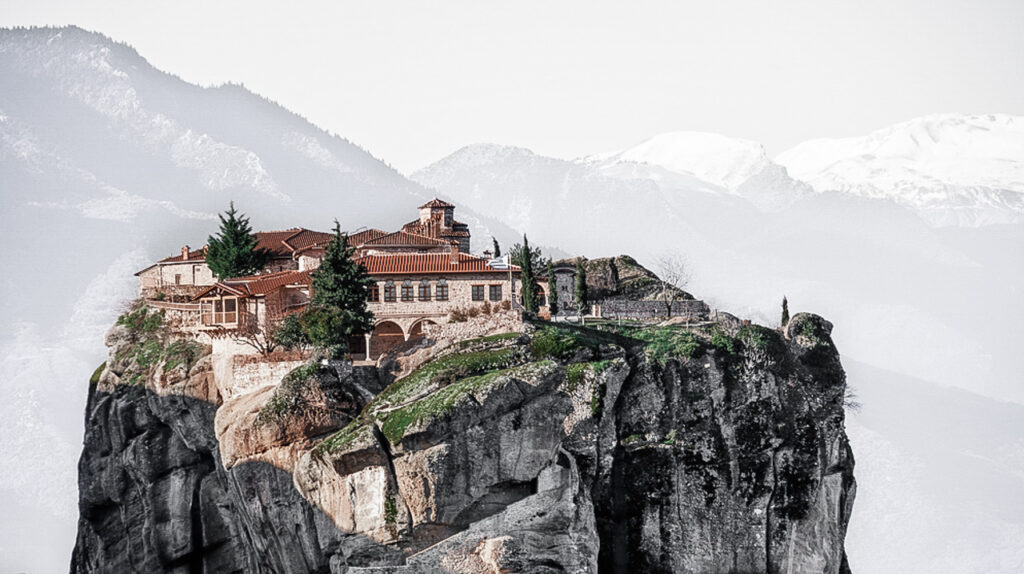
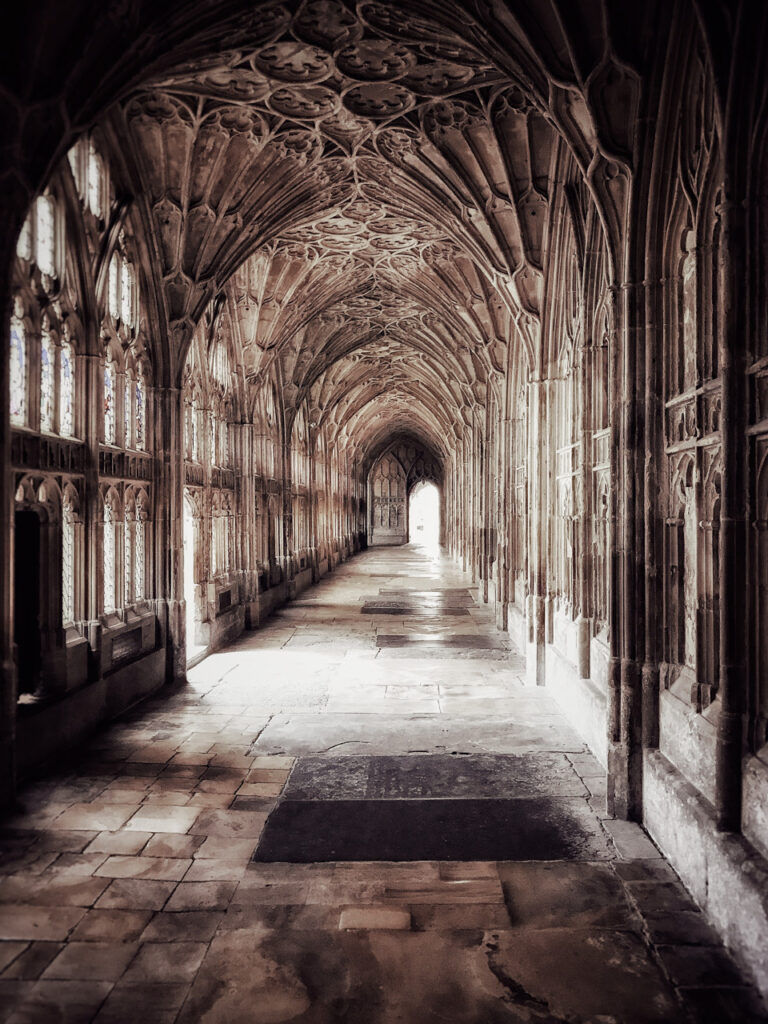
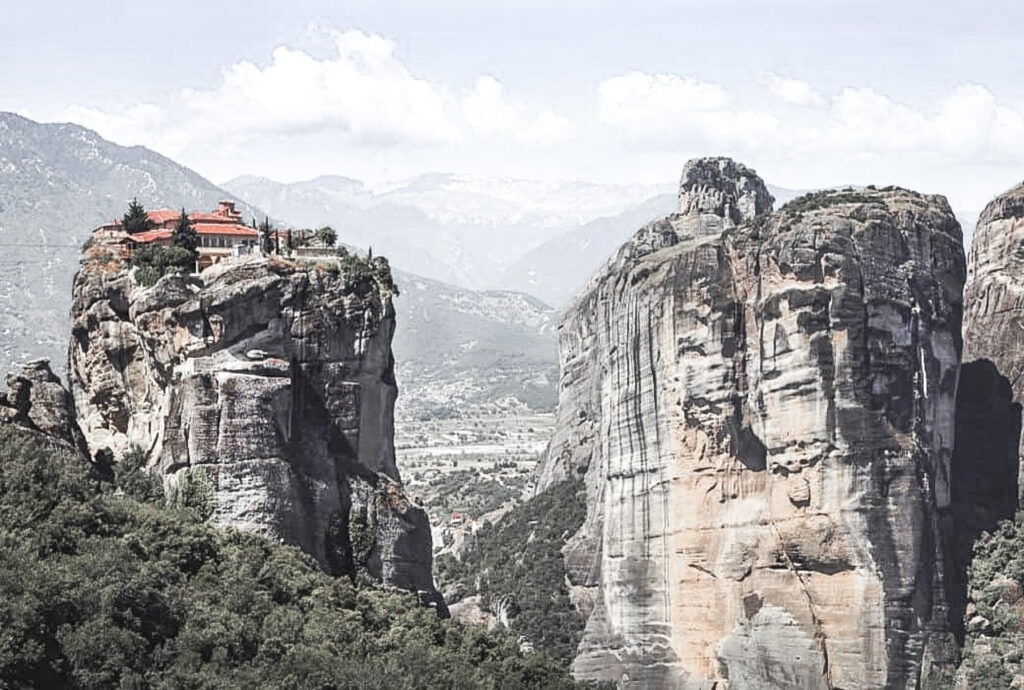
Here is a sample itinerary for those wishing to explore the Meteora monasteries:
Day 1 ::
Arrive in the town of Kalambaka, located at the base of the Meteora rock formations. You can travel to Kalambaka by train, bus, or car from Athens or Thessaloniki. Check into your hotel in Kalambaka, and spend the afternoon exploring the town. You can visit the local shops and restaurants or stroll through the beautiful streets. Enjoy a traditional Greek dinner at one of the local tavernas in the evening.
Day 2 ::
Wake up early and head to the Meteora monasteries. You can take a guided tour or explore the monasteries on your own. There are six monasteries to visit, so plan to explore the whole day. Make sure to dress appropriately for the monasteries – both men and women should wear clothes that cover their shoulders and knees.
Start with the largest and most famous monastery, the Great Meteoron Monastery. This monastery was founded in the 14th century and is the oldest and largest of the monasteries.
Visit the other five monasteries – the Varlaam Monastery, the Roussanou Monastery, the Agios Nikolaos Anapafsas Monastery, the Agia Triada Monastery, and the Agios Stefanos Monastery. Each of these monasteries has its own unique history and architecture. We highly recommend a private guide who can provide context, history, and tour at your pace.
In the evening, head back to Kalambaka for dinner and relaxation.
Day 3 ::
Take a day to visit the nearby villages of Kastraki, a charming town with narrow streets, traditional houses, and beautiful gardens. You can stroll through the town, take pictures of the homes and gardens, and explore the local shops and tavernas. This area is known for its beautiful hiking trails, which offer breathtaking views of the Meteora monasteries and the surrounding valleys. Some popular hiking trails include the Path of the Gods, the ‘Monks’ Trail, and the Agia Triada Trail.
Day 4 ::
Take a day trip to the nearby town of Trikala, which is about an hour’s drive from Kalambaka. Trikala is a charming town with a rich history and several important landmarks, including the Byzantine-era fortress of Justinian and the Ottoman-era mosque of Osman Shah.
Have lunch in Trikala and then return to Kalambaka for a farewell dinner in Kalambaka.
Remember that the Meteora monasteries are closed on certain days of the week, so check their schedule before planning your visit.
And also, the villages and towns in the Meteora region are known for their colorful festivals and events, which offer a chance to experience the local culture and traditions. Some popular events include the Feast of St. George in Kastraki, the Grape Harvest Festival in Kalambaka, and the Olive Harvest Festival in Trikala.

Be sure to take plenty of photos of the stunning views from the monasteries, which offer panoramic views of the surrounding valleys and mountains. The sunset is especially spectacular!

